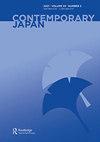Radiation moms’ organizational survival for a decade: A shift from advocacy to non-advocacy activities
引用次数: 2
Abstract
ABSTRACT This article examines changes in Japan’s social movement organizations (SMOs) after the Fukushima Daiichi nuclear disaster, focusing on mothers against radiation as key actors. After the Fukushima disaster, Japan’s SMOs enjoyed not only a resurgence of mass protests, but also an increase in advocacy activities and mothers’ participation in relation to radiation protection. Furthermore, some mothers’ SMOs against radiation survived for a decade. Such longevity is internationally unusual for an SMO. However, these SMOs have been virtually unstudied with regards to this longevity. How did mothers’ SMOs against radiation fight for survival for more than a decade? To answer this question, this project conducted long-term ethnographic research on a mothers’ SMO, the Kodomo-tachi o Hōshanō kara Mamoru Zenkoku Nettowāku (the National Network of Parents to Protect Children from Radiation; the “Kodomozenkoku”). Founded in 2011, Kodomozenkoku has been active for more than a decade. It recruited over 350 local SMOs as rank-and-file and shifted its focus from national advocacy activities to local non-advocacy activities. Based on this case study of Kodomozenkoku, this research argues that Kodomozenkoku’s flexibility in its transformation concerning goals, internal structure and interorganizational relations enabled this newcomer SMO to survive for over a decade.辐射母亲十年来的组织生存:从倡导活动到非倡导活动的转变
本文考察了日本福岛第一核电站核灾难后社会运动组织(SMOs)的变化,重点关注母亲反对辐射的关键角色。福岛核灾难发生后,日本的SMOs不仅再次出现大规模抗议活动,而且与辐射防护有关的宣传活动和母亲的参与也有所增加。此外,一些母亲的防辐射SMOs存活了10年。如此长的寿命对于SMO来说在国际上是不寻常的。然而,关于这种寿命,这些SMOs几乎没有被研究过。母亲们对抗辐射的SMOs是如何在十多年里生存下来的?为了回答这个问题,这个项目对母亲的SMO进行了长期的民族志研究,Kodomo-tachi o Hōshanō kara Mamoru Zenkoku Nettowāku(全国父母保护儿童免受辐射的网络;“Kodomozenkoku”)。Kodomozenkoku成立于2011年,已经活跃了十多年。它招募了350多名当地的普通社会活动人员,并将其重点从国家倡导活动转移到地方非倡导活动。本研究通过对Kodomozenkoku公司的案例分析,认为Kodomozenkoku公司在目标、内部结构和组织间关系等方面的灵活转型,使这家新成立的SMO公司得以存活十余年。
本文章由计算机程序翻译,如有差异,请以英文原文为准。
求助全文
约1分钟内获得全文
求助全文

 求助内容:
求助内容: 应助结果提醒方式:
应助结果提醒方式:


